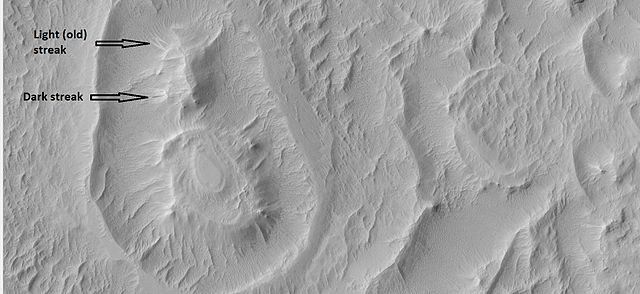The Sinus Sabaeus quadrangle is one of a series of 30 quadrangle maps of Mars used by the United States Geological Survey (USGS) Astrogeology Research Program. It is also referred to as MC-20 .
The Sinus Sabaeus quadrangle covers the area from 315° to 360° west longitude and 0° to 30° degrees south latitude on Mars. It contains Schiaparelli, a large, easily visible crater that sits close to the equator. The Sinus Sabaeus quadrangle contains parts of Noachis Terra and Terra Sabaea.
Image of the Sinus Sabaeus Quadrangle (MC-20). Most of the region contains heavily cratered highlands. The northern part includes Schiaparelli Crater.
Wislicenus Crater Floor, as seen by HiRISE. Erosion on floor has made layers visible.
Close up of layers in eroded deposits on the floor of Bouguer Crater, as seen by HiRISE. This image is in a different part of the crater than the previous image.
Layers in Monument Valley. These are accepted as being formed, at least in part, by water deposition. Since Mars contains similar layers, water remains as a major cause of layering on Mars.
Schiaparelli (Martian crater)
Schiaparelli is an impact crater on Mars, located near the planet's equator at latitude 3° south and longitude 344° in the Sinus Sabaeus quadrangle. It measures approximately 459 kilometers (285-miles) in diameter and was named after Italian astronomer Giovanni Schiaparelli, known for his observations of the Red Planet and his mistranslated term "canali". The name was adopted by IAU's Working Group for Planetary System Nomenclature in 1973.
Layers in a crater inside the Schiaparelli basin as seen by MGS.
Layers in a crater inside the Schiaparelli basin, as seen by HiRISE.
Circular structures on floor of Schiaparelli basin, as seen by HiRISE under HiWish program.
Close-up of circular structure from previous image. Streaks are also visible.








